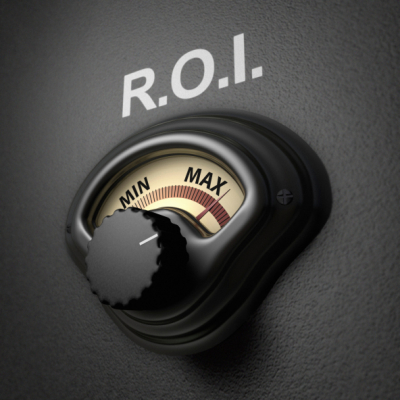Be Agile and Responsive: Implement A Rolling Forecast

Adjusting nimbly to rapidly changing business conditions, will keep your business in the “(k)now”. Stop waiting for the annual edition of Your Business – The Past 12 Months. Instead, stay ahead of the game with “Rolling Forecasts”.
A Tool for Now
Rolling forecasts are remarkably effective tools that allow companies to remain agile and respond to changes quickly. Unlike annual budgets, which set yearly targets, they reflect performance on a quarterly, monthly, or even weekly basis. With the disciplined use of rolling forecasts, you can:
- Emphasize making improvements today rather than excuses for yesterday.
- Quickly identify rising business issues.
- Maintain focus on key performance areas.
- Drive forward thinking.
- Quickly recognize changes to the competitive landscape.
- Create more accountability in the planning process.
So, toss the annual budget? No! They are ideal instruments for igniting strategic business planning, setting employee performance incentive plans and to ensure bank covenants and other debt agreements are adequately provisioned. However, annual budgets quickly become outdated and fall short when used as the primary business-planning tool.
Frequent Forecasting: Keeping Pace with Change
With rolling forecasts, typically done monthly, a business can combine current market information with its past month’s performance to better predict sales, expenses, profits, investment, and other key variables. The “Great Recession” reinforced the need for timely financial forecasting. CFO magazine contributing Editor Russ Banham writes, “[M]any carefully prepared budgets were capsized by volatile stock markets, commodity prices and exchange rate.” He notes that some companies scrapped their annual budgets altogether, while others “execute a budget but, for the most part, manage the business without it.” Instead, they rely on “rolling forecasts, flexible budgets, and event-driven planning.” According to a recent survey by researchers Aberdeen Group, 71 percent of top performing organizations mitigate risks created by volatile business conditions by continuously updating their forecasts.
Three Keys to Help You Roll with the Changes
When creating rolling forecasts, finance teams should keep three principles in mind:
1. Seamlessness
The real art in creating successful rolling forecasts is to ensure they are seamlessly integrated into the company’s operations. Unlike the annual budget, which can be arduous and time-consuming to produce, rolling forecasts should not require a large time commitment. Using the right tools, finance teams should be able to research the market and adjust their projections easily, whether they pertain to volume, pricing or expenses, and continue to do so on a regular basis. Input from sales, operations, procurement and admin are essential, but they don’t need to be laborious.
2. Identifying the Biggest Drivers
The financial indicators companies need to watch differ for every business, depending on its circumstances. The biggest drivers vary widely from business to business. For example, marketing investment may be a key driver for a consumer product company while machine downtime may be a key driver for a manufacturer. To be useful key drivers must:
- Significantly impact the most important parts of your operation
- Be within your control - your actions must have influence over the driver
- Performance of the driver must be measurable.
The finance team should ensure the company’s most significant business drivers are examined most frequently. For example, during each month of a quarter, a different driver could be highlighted in the forecast. For instance, the first month could be volume, the second gross margin, and the third a critical demographic measure. The Focus Matrix is one tool that helps companies grasp the critical elements of their forecasts. For instance, in a low margin/high fixed cost business, volume is the main driver of profitability and would be a critical component of a forecast. Conversely, in a wide margin/high variable cost business, monitoring the sales pipeline may be the key to effective forecasting.
3. Flexibility
The process should be flexible. If the company adds another product line, for instance, the business model has to be flexible enough to accommodate that. The finance team should not simply assume the same business drivers apply even as conditions change. A review process and flexibility should be built in to the system to prevent addressing issues that no longer matter.
A Rolling Forecast Case Study
A company I recently worked with had 15-month forward contracts that should have allowed for very accurate forecasting. The problem was that the reporting process for this firm wasn’t robust enough to provide a valuable rolling forecast. They faced two main challenges:
- Sales and marketing employees spent the majority of their time delivering services, while falling far behind on their administrative work.
- They were two to three months late issuing bills, leading to cash-flow problems and occasional difficulties making payroll.
Once the company became committed to implementing a monthly rolling forecast, it became clear the upstream activities had to be improved. They optimized these activities, and the rolling forecast became an invaluable planning tool for the company. The company’s cash flow quickly improved, giving its leaders confidence and setting them up for future success. Having a disciplined forecasting process made all the difference. All of our company’s need to keep up, be quick on our feet, even when the ground under us keeps changing. Rolling forecasts help us do that by staying on top of market changes impacting our business and adjusting to the changes in near real time. Your finance team or a financial consultant that specializes in this area can help set up the process so you can quickly and seamlessly create business forecasts that will improve the bottom line and spur growth. You can’t afford to wait. Your business needs it now.
Identify your path to CFO success by taking our CFO Readiness Assessmentᵀᴹ.
Become a Member today and get 30% off on-demand courses and tools!
For the most up to date and relevant accounting, finance, treasury and leadership headlines all in one place subscribe to The Balanced Digest.
Follow us on Linkedin!
